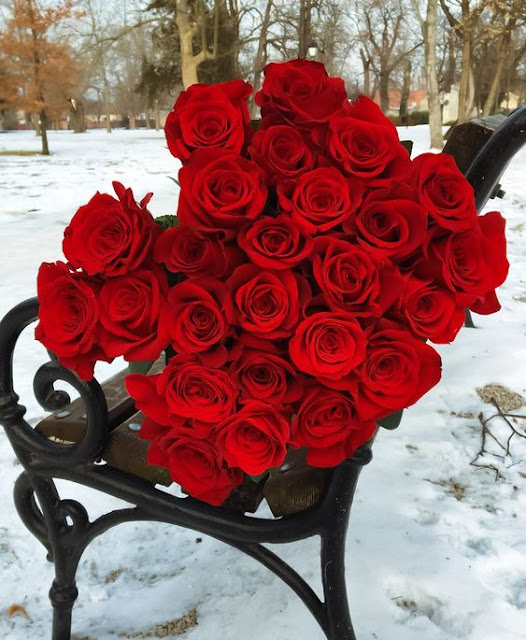Red Roses
Red roses are on the whole mixtures or cultivars since red is definitely not a characteristic shading wild animal groups roses come in. All cutting edge red roses are mind-boggling half and halves of European, Middle Eastern, and Eastern Asian species roses, with American species roses once in a while also. Indeed, even today, it is hard to breed genuine red roses, since seedlings quite often have a purplish, pinkish, or yellowish tone, or they turn out some other shading.
 |
| Red Roses |
In prior occasions, when European individuals said "red roses", the roses they were alluding to were really purplish-red, profound rose, or maroon, since genuine red roses didn't exist in Europe until they were reared in the mid-1800s. The "red" roses they were typically alluding to were Gallica roses, which were the main profoundly hued European roses.
"Red" could likewise mean orange. For instance, "red hair", which is exceptionally old vernacular before "orange" was being used, and this is still what it is called today, despite the fact that it is misnomer. Pinkish-maroon red half and half roses had existed in China for an extremely prolonged stretch of time, and the first named assortment that still exists today is "Slater's Crimson China", named in the late 1700s. This rose has been utilized to breed a considerable lot of the present red roses. The first Chinese personality is lost in time.
There are just a few wild types of roses that are "red". These are Rosa foetita bicolor, which is red-orange shading with petals with a yellow turn around. This rose is never again prevalent in light of the fact that it just blossoms once every year and it isn't that simple to develop, isn't enjoyably scented, it drifts and gets huge, and it doesn't have twofold blooms that keep going long, however it was mainstream during the 1600s in Europe when it was the main warm red rose in presence around then.
The other is Rosa moyesii "Geranium", which is a cultivar of an animal groups climbed that is likewise not excessively famous on the grounds that it additionally has a vast spreading "wild" shape, and transient single blossoms, and like practically all species roses, is likewise just sprouts once every year, except they are both exceptionally exquisite plants with a wild fancy appeal.
The peruse may get already outstanding with the sonnet's tremendously cited beginning feature. Its request after some time in all likelihood shoots from the valor of its dispute, the speaker's affection is communicated through the anticipated image of the bloom rose and amid the line's four strong beats. The artist's inclination for a rose may at first look stale, alongside the shading "red" may look too clear an indication of adoration and excitement. Subsequently, far if the connection between the revered one and as far as possible on the web, a careful perusing investigates the subtler modes in which the speaker imparts about his enthusiasm.
Why, for instance, is the articulation "red" consistent? The response to this may be found in the following line. Since red is assessed the shade of the bloom, the return of the descriptor represents the total and most flawless indication of the blossom climbed, it's an ideal state.















0 comments:
Post a Comment